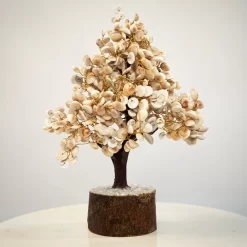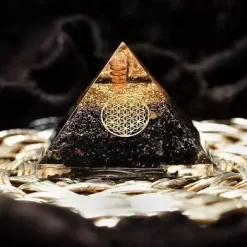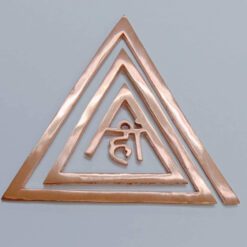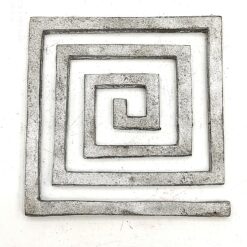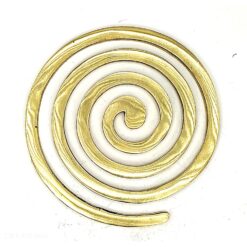Wavs
Narasimha

Mythological Background and Origin
Narasimha’s origin story is recounted in Hindu scriptures, particularly in the Vishnu Purana and the Bhagavata Purana. According to mythology:
-
Hiranyakashipu’s Boon: Hiranyakashipu, a powerful demon king, performed severe penance to please Lord Brahma. Pleased with his devotion, Brahma granted him a boon, making him virtually invincible. Hiranyakashipu asked for the ability to not be killed by any human or animal, during the day or night, inside or outside, on the ground or in the sky.
-
Birth of Prahlada: Hiranyakashipu’s son, Prahlada, became an ardent devotee of Lord Vishnu, much to his father’s dismay. Hiranyakashipu attempted to kill Prahlada multiple times due to his devotion to Vishnu, but each time he was protected miraculously.
-
Incarnation of Narasimha: Finally, when Hiranyakashipu demanded to know where Vishnu resided, Prahlada replied that Vishnu was everywhere, even in the pillar of their palace. In a fit of rage, Hiranyakashipu struck the pillar, and Lord Narasimha emerged. Narasimha was neither human nor animal but appeared as a half-man, half-lion form, fulfilling the conditions of Brahma’s boon.
-
The Battle and Victory: Narasimha then attacked Hiranyakashipu at dusk (neither day nor night), placed him on his lap (neither on the ground nor in the sky), and tore him apart with his claws (neither by human nor animal). Thus, Narasimha triumphed over the demon king and restored cosmic order.
Characteristics and Symbolism
Narasimha is depicted with the following characteristics:
-
Half-Man, Half-Lion Form: Narasimha’s form symbolizes the convergence of human intelligence and animalistic strength, signifying the transcendence of dualities.
-
Claws and Mane: His lion-like features, including sharp claws and a fierce mane, symbolize his ferocity in protecting devotees and upholding righteousness.
-
Chakra and Conch: He often holds a chakra (discus) and a conch shell, weapons associated with Lord Vishnu, symbolizing his divine authority and protection.
Devotional Significance and Worship
Narasimha is worshipped for various reasons:
-
Protector of Devotees: Devotees invoke Narasimha for protection from evil forces, adversity, and negative energies.
-
Dispeller of Fear: He is believed to remove fear and instill courage in his devotees, helping them overcome obstacles in life.
-
Destroyer of Evil: Narasimha is revered as the annihilator of demonic forces and the embodiment of divine justice.
-
Spiritual Liberation: Worshipping Narasimha is believed to grant spiritual liberation (moksha) and purification of karma.

Festivals and Celebrations
-
Narasimha Jayanti: Celebrated on the 14th day of the bright fortnight (Shukla Paksha) of the Hindu month of Vaishakha (April-May), Narasimha Jayanti commemorates the birth anniversary of Lord Narasimha.
-
Prahlada Nataka: In some regions, elaborate theatrical performances (Prahlada Nataka) narrating the story of Prahlada and Narasimha are enacted during festivals.
Cultural and Philosophical Significance
-
Dharma and Justice: Narasimha’s incarnation underscores the triumph of dharma (righteousness) over adharma (evil) and the importance of divine intervention in restoring cosmic balance.
-
Devotion and Faith: The devotion of Prahlada and the protection granted by Narasimha highlight the power of unwavering faith and devotion in Hindu mythology.
Narasimha remains a compelling figure in Hindu mythology, embodying aspects of divine protection, justice, and spiritual liberation. His story resonates with devotees as a testament to the triumph of good over evil and the transformative power of devotion. Through worship and celebration, Narasimha continues to inspire reverence and devotion among millions of Hindus worldwide.

Components of Puja:
-
Preparation (Sankalpa):
- Puja begins with a preliminary declaration of intent (Sankalpa) by the worshipper, stating the purpose and occasion of the ritual.
-
Invocation (Avahan):
- The deity is invited to reside in the idol, image, or symbol placed on the altar (mandap). This is done through prayers and mantras, inviting the divine presence.
-
Offerings (Upachara):
- Various offerings are made to the deity as symbols of devotion and gratitude. These can include flowers, incense, lamps (diya), water (jal), food (prasadam), fruits, and sweets.
-
Prayers and Mantras:
- Devotional hymns, prayers (stotras), and Vedic mantras specific to the deity are recited or chanted by the worshipper. These prayers seek blessings, protection, and guidance from the deity.
-
Worship (Archana):
- The worshipper may perform rituals such as circumambulation (pradakshina) around the deity, waving of lamps (arti), and offering of camphor (arati) while chanting mantras.
-
Benediction (Prasada):
- After completion of the puja, the prasad (consecrated offering) is distributed among the participants and attendees as a symbol of blessings and divine grace.
Types of Puja:
-
Daily Puja (Nitya Puja): Regular worship performed by individuals or families at home or in temples.
-
Festival Puja: Special rituals conducted during Hindu festivals such as Diwali, Navaratri, and Ganesh Chaturthi.
-
Temple Puja: Elaborate ceremonies conducted by priests in temples for devotees.
-
Personal Puja: Individual rituals performed for specific purposes like seeking blessings, healing, or personal milestones.
Significance:
-
Spiritual Connection: Puja deepens the spiritual bond between the worshipper and the deity, fostering devotion, humility, and gratitude.
-
Purification: The act of puja purifies the mind, body, and soul, aligning the worshipper with divine energies and cosmic harmony.
-
Community and Tradition: Puja rituals strengthen community bonds and uphold cultural traditions passed down through generations.
-
Karma and Dharma: Performing puja with sincerity and devotion is believed to enhance positive karma and uphold righteous living (dharma).






